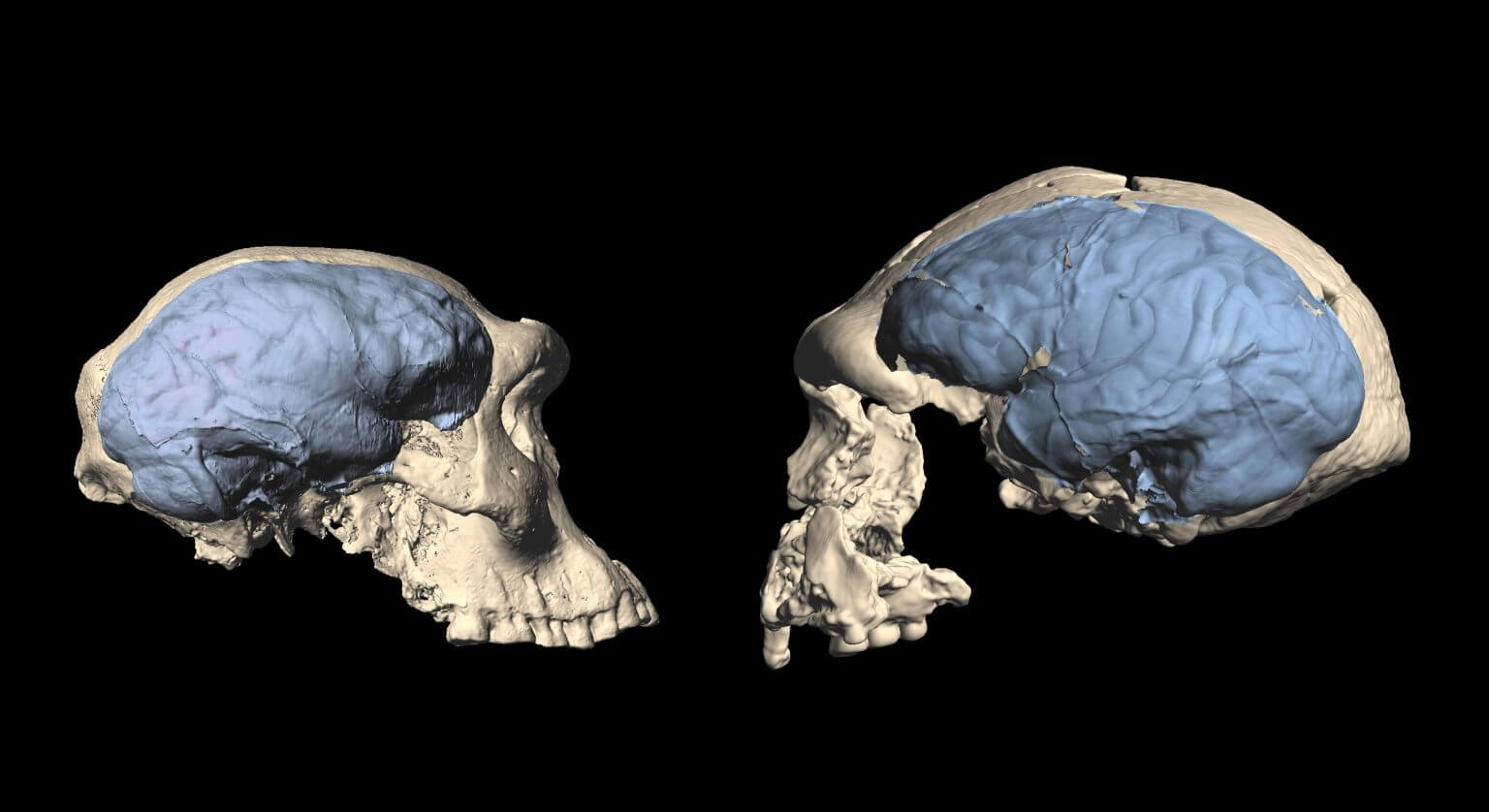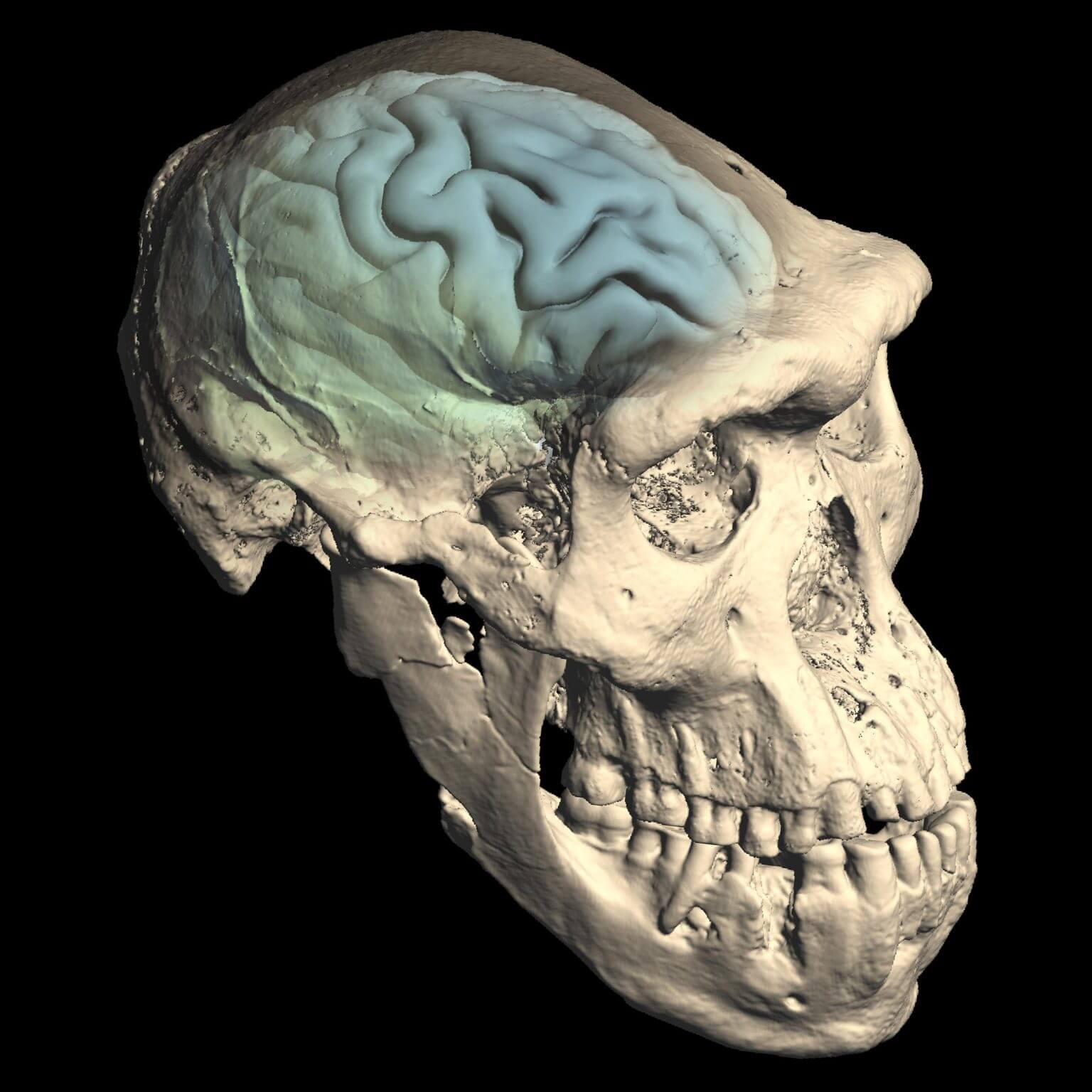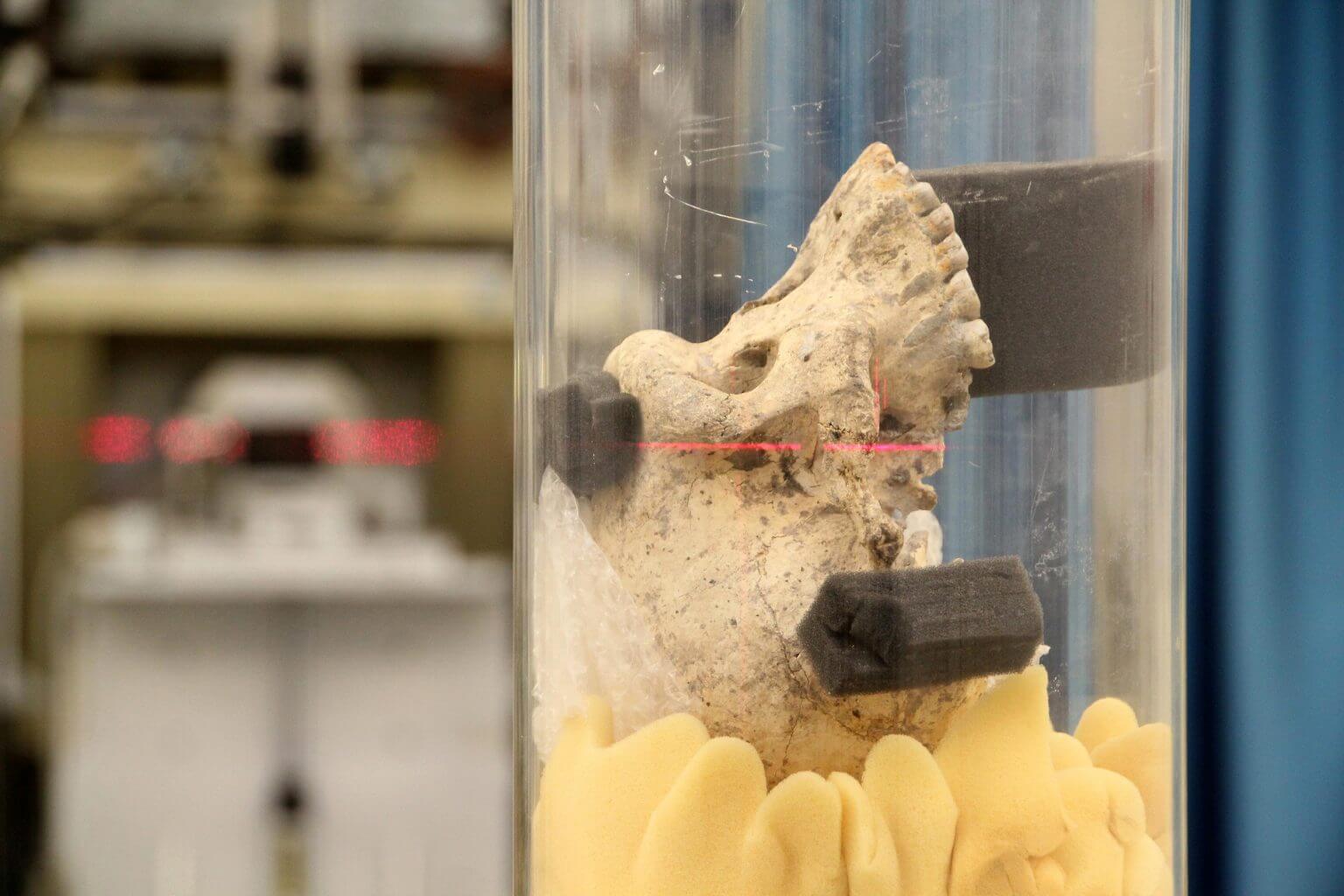Only 1.7 million years ago, the brain developed to its current size, and then we also see primitive human species (hominins) go out of Africa for the first time

The human brain as we know it today is relatively young. It developed about 1.7 million years ago, when the stone tool culture in Africa became more and more complex. Shortly thereafter, the new hominin populations spread to Southeast Asia. Researchers from the University of Zurich showed this using computed tomography (CT) imaging of fossilized skulls.
Modern humans are different from our closest relatives - the great apes (or great apes): we live on land, walk on two legs, and have much larger brains. The first populations of the hominin genus were established in Africa about 2.5 million years ago. They already walked upright, but their brain volume was only half that of modern humans. The earliest hominin populations in Africa had a primitive monkey-like brain - just like their heavier ancestors, the australopithecines. When and where did the human brain develop in its current version?
Comparisons between skulls reveal modern brain structures
An international team led by Christoph Zollikoffer and Marcia Ponce de Leon from the Department of Anthropology at the University of Zurich (UZH), has now succeeded in answering these questions. "Our analyzes indicate that modern human brain structures appeared only 1.5 to 1.7 million years ago in the African human population," says Zollikofer. The researchers used computed tomography to examine the fossil skulls of hominins, who lived in Africa and Asia about a million years ago. They then compared the fossil data with skull data from humans and great apes.

Besides its size, the human brain differs from that of the great apes, especially in the location and organization of the various brain regions. "The typical features of humans are found mainly in the areas located in the frontal lobe responsible for planning and executing complex patterns of thought and action, and ultimately also for language," notes lead researcher Marcia Pont de Leon. Since these areas are significantly larger in the human brain, the adjacent areas of the brain moved backwards.
The typical human brain spread rapidly from Africa to Asia
Among the first hominin populations outside of Africa - discovered in Demanisi, Georgia - they had primitive minds just like their African relatives. Hence the brains of early human species did not become particularly large or particularly modern until about 1.7 million years ago. However, these early humans were certainly capable of making and using many tools, adapting to the new environmental conditions of Eurasia, developing food sources for animals, and supporting group members who needed help.

During this period, the cultures in Africa became more complex and diverse, which is reflected in the variety of stone tools that were discovered. The researchers believe that there is an interdependence between biological development and cultural development. "It is likely that the earliest forms of human languages were also developed during this period," says Ponce de Leon. Fossils found on the island of Java provide proof that the new populations were very successful: shortly after their first appearance in Africa, they had already spread to Southeast Asia.
Fossil brains in fossilized skeletons reveal the stages of human development
The previous theories did not support this relationship due to the lack of reliable data. "The problem is that the brains of our ancestors were not preserved as fossils. The structure of their brains can only be estimated from the formations left by the folds and furrows on the inner surfaces of the fossilized skulls" says the head of the study Zollikofer. Because these patterns differ significantly from person to person, until now it has not been possible to clearly determine whether a particular hominin fossil has a larger brain or a brain similar to that of the great apes. Through computed tomography analyzes of a variety of fossilized skulls, the researchers were able to understand the differences in brain structure.
More of the topic in Hayadan:
- Neanderthal man was a species parallel to modern man
- Three 9,000-year-old skulls found in excavations in the north were preserved thanks to the burial custom of their time
- The skull in Georgia: a head is always a beginning
- The human messenger race / conversation with Professor Yoel Rak
- A complete skull was discovered, which is the earliest evidence of human presence outside of Africa

One response
In this article it would have been appropriate to give data on the volume of the brain to show the development and of course to indicate the different hominid species accordingly.
Without it we have a beautiful story but without a scientific connection.